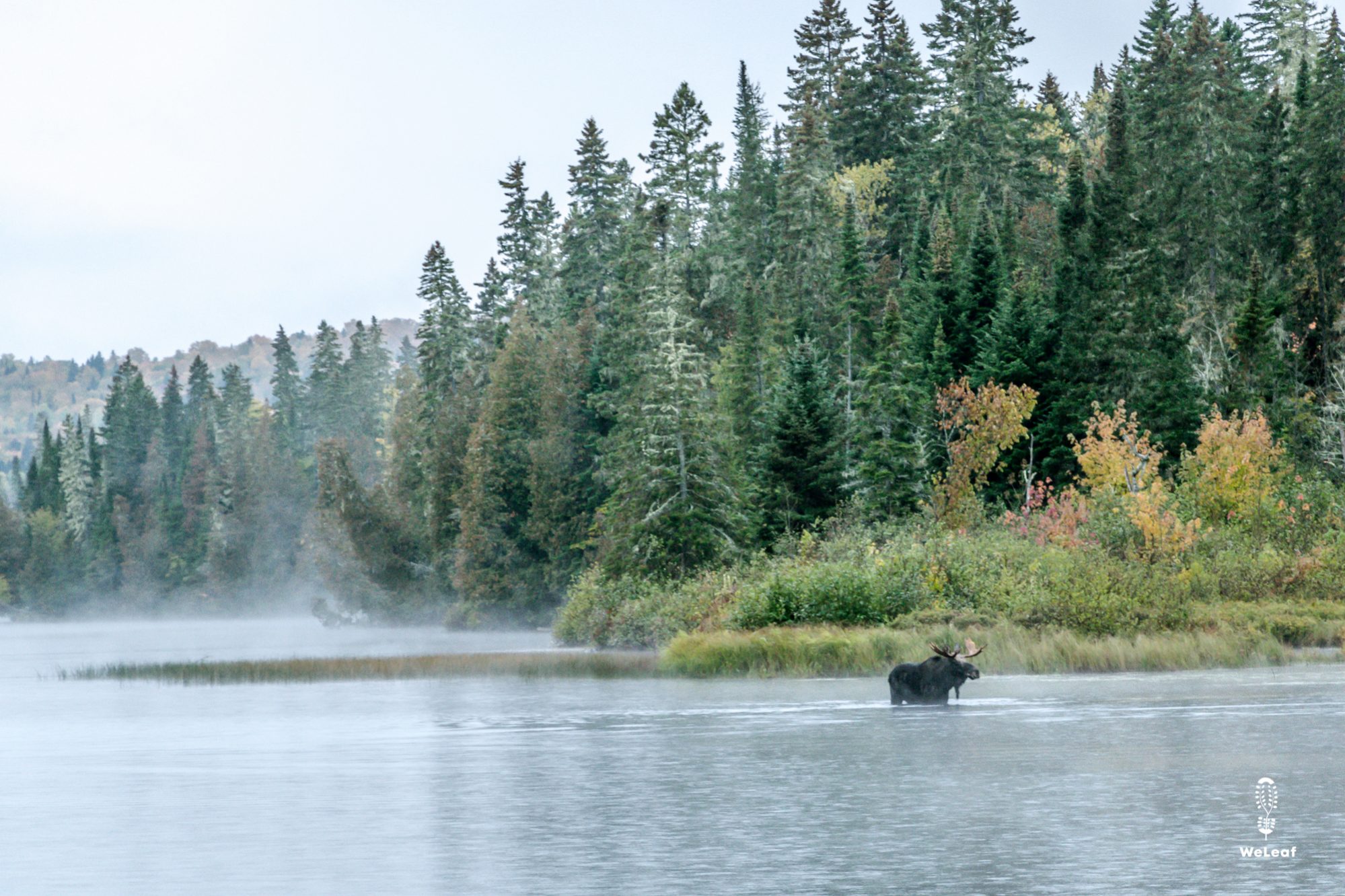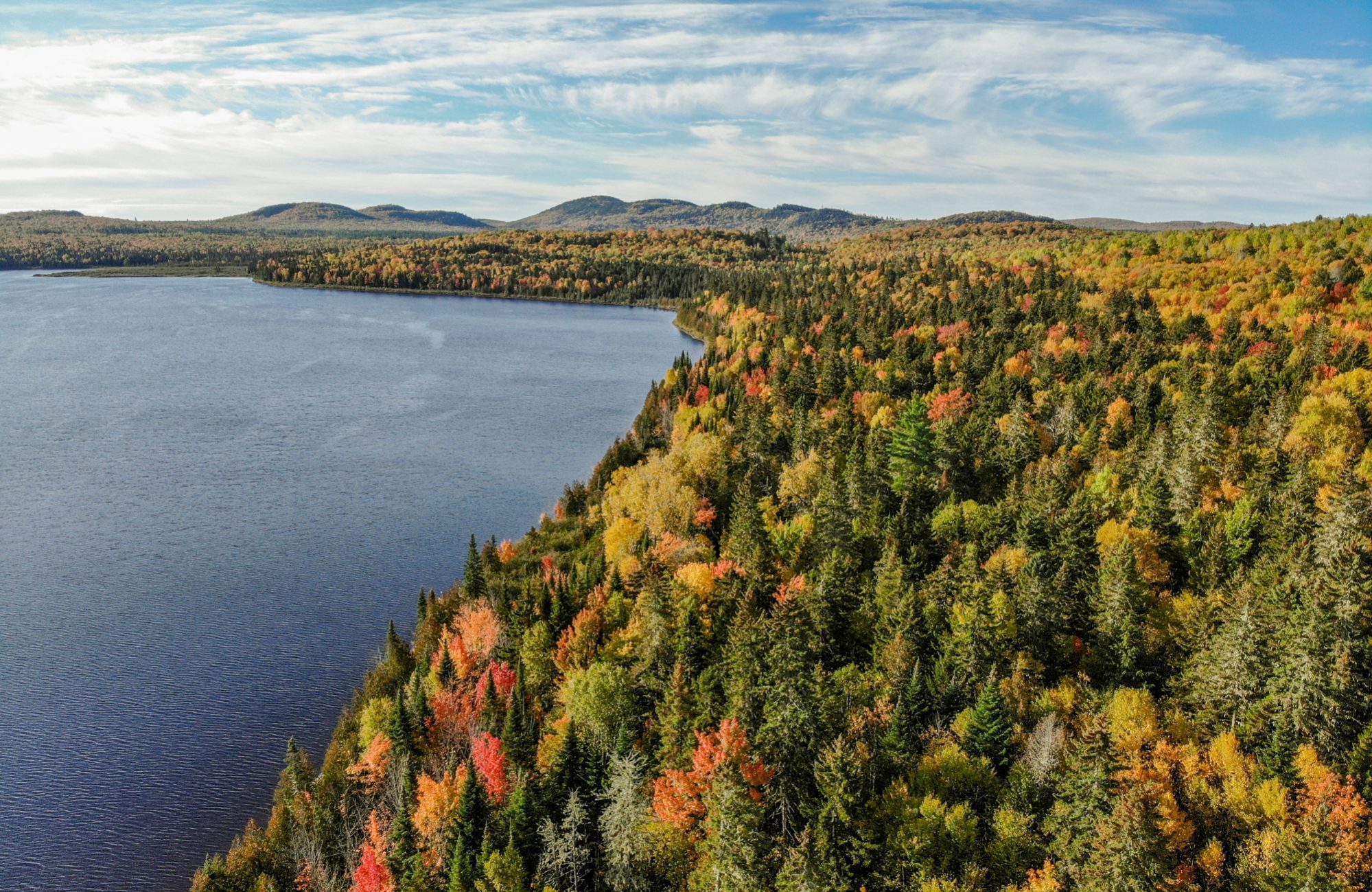
The Northern Forest Canoe Trail

Playground in the back yard
January 11, 2020
Hiking the AT in summer
January 15, 2020
The NFCT
The Northern Forest Canoe Trail (NFCT) is a 740 mile (1,200 kilometer) canoe trip that explores ancient Indian trade routes. It is the longest mapped canoe route in the US. The trail only exists since 2006 and barely 100 people have completed the trail from start to finish since then. The trail follows the Northern Forest, the largest connected forests in the east of the United States. More than 7,000 lakes and countless rivers form this dream area for a canoe trip. Mount Katahdin, the mythical end of the Appalachian Trail can be seen from the canoe on the way to the northernmost tip in the state of Maine. Sometimes the trail is nicknamed "the Appalachian Trail of waterways". For us, the canoe trip was part of the Alternative Appalachian Trail, a 3,500 kilometer journey through the Appalachians on foot, by bike and by canoe.
The trail is not easy and some claim it is one of the toughest canoe trips in the world. To complete the full 1,200 kilometers, a paddler will need all his canoeing techniques, upstream sailing, poling, rapids, large lakes with a lot of wind and waves and lots of portages. These are the same challenges that the Indians and first European explorers had to overcome. The trail is not just one river, but a series of 23 rivers and 59 lakes. There are no less than 260 kilometers upstream and more than 65 portages, counting up for a total of almost 150 kilometers. We paddled the Northern Forest Canoe Trail in 2019 and are happy to share our tips.
"The northern forest canoe trail is a heritage trail, as close as we can come to a time machine. Paddlers jump from the present through the past as they slide from wild to rural to urban and back along a thousand-year-old water highway" - Ron Canter 2002
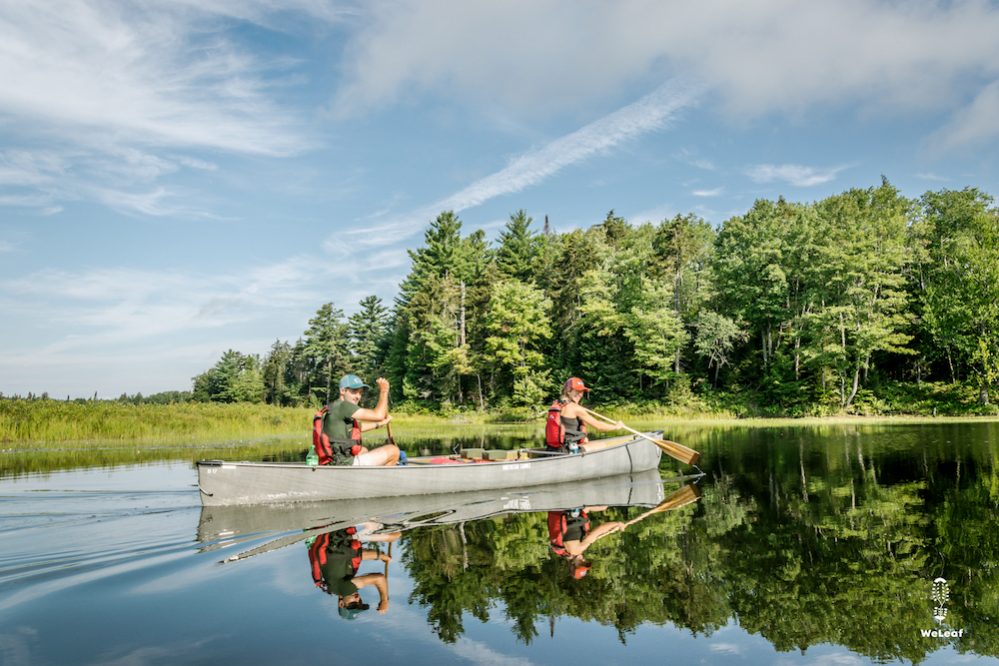
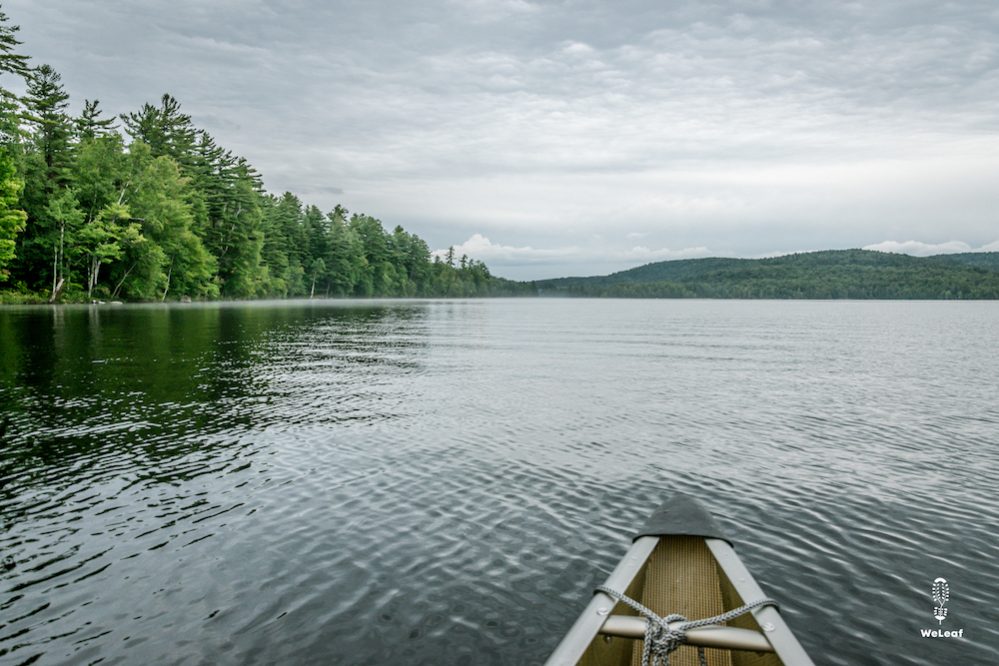
Route and time
The Northern Forests is the largest connected ecosystem to the west of the Mississippi. Traveling by land was difficult, slow and challenging. The first original inhabitants of the area discovered that the water was a much faster and easier way to cross the dense forests. The canoe trip follows the original trade routes through four American States and one Canadian province.
The NFCT starts in Old Forge, New York. The first part of the trail goes through the Adirondacks Park, one of the largest nature parks in the US. It is a special park where living is permitted under strict rules. Along some lakes you will see many summer cabins, while others are deserted and remote. Lake Champlain, the largest lake on the trail, is located on the border between New York and Vermont. Crossing the lake can be dangerous and a real challenge. This is followed by many kilometers of upstream paddling, low water levels and lots of portaging. New Hampshire already feels more remote, but it is only from Maine that you really dive into the wilderness with big lakes and the Allagash wilderness as a wonderful cherry on the cake. 1,200 kilometers later, the trail ends in Fort Kent, Maine, on the border with Canada.
Depending on your pace, the NFCT will last between thirty and sixty days. On average paddlers take fifty days to cover the 1,200 kilometers, which amounts to 24 kilometers a day. That sounds like a piece of cake, but with all the obstacles there are enough days where you can barely cover ten kilometers.
Thru-paddling
In contrast to the Appalachian Trail, the Northern Forest Canoe Trail is anything but popular. Every year there are barely 30 to 50 people who try to complete the entire trail. Only twenty percent reach the end. Since the official in 2006, there are only 100 paddlers who have fully completed the trail, and of these didn’t do it completely self supported.
There are very few participants from Europe so there is a good chance that you will be the first in your country. Olivier is the first Belgian ever to complete the trail. Zoë is the third Dutch because a British couple with a Dutch passport preceded her.
Navigatie
Navigatie
The trail is perfectly mapped by the Northern Forest Canoe Trail non-profit organization. There are thirteen maps with concise information about the rapids, portages and recommended routes. The back of the map is full of interesting information about history, geology, nature and wildlife. However, the maps alone are not sufficient for a thru paddle. The level of detail is not good enough and the map does not tell you all the essential information you need. We used a guidebook and a GPS as additions.
The Thru-Paddlers Companion is a essential part of the navigation. The book describes each section in detail and provides all the information that is needed. Portages are described in detail, dangerous rapids, the water levels in the different seasons, sleeping places and unique tips. Without the book we would have had many unpleasant surprises.
The trail is marked with yellow diamond-shaped symbols. These indicate the places where you have to get in and out of the water, and mark some of the portages. The symbols are not so numerous on the first half of the trail and a small yellow diamond is hard to see on large lakes. We used our Sigma GPS as a supplement to find the right way on the lakes and during portages. A GPS is not essential, but particularly useful compared to, for example, the Appalachian Trail.
There are NFCT kiosks at various places on the trail. It is an information board with a sign-in box. There is a paper in the box where you can write down your name, starting place and destination. The chance is small that you will encounter other thru paddlers, but in this way you know who has been on the trail.
Best time to start
You can paddle the NFCT between May and October. In all other months, most rivers are frozen and it is too cold for canoeing. Most thru paddlers start at the end of May / beginning of June, but based on our own experience, we recommend starting only in August. Why? You can read that in our six reasons to start the NFCT in August.
Food and water
A canoe trip has many advantages. You can take more food with you in the canoe than on your back, and the old waterways take you past various villages where you can resupply. Only the last part of the trail goes through the real wilderness where you won't encounter anything for at least ten days. Resupply is no problem on the rest of the trail.
In the villages there are small restaurants if you do not want to cook yourself.
We had a resupply every five days. There was usually a supermarket, but the further you are on the trail, the smaller the villages. The stores are becoming more expensive and the selection is limited. Our resupply schedule looked like this:
Old Forge: supermarket, 5 days (Shop in Old Forge is expensive so we went to the Aldi in Utica)
Saranac Lake: supermarket (Aldi), 5 days
Plattsburg: supermarket (Aldi), 7 days
Newport: supermarket (Vista Food), 6 days
Groveton: supermarket (Hannaway), 4 days
Errol: food package, 3 days (there is only a very small shop in Errol)
Rangeley: supermarket (IGA), 6 days
Jackman: food package and supermarket, 13 days (Jackman is the last village before the wilderness with a supermarket)
The first six hundred kilometers of the trail there is a lot of civilisation and agriculture around the water. There are even a number of rivers where water filtering is discouraged due to the drainage of cattle farms. We had a 4 liter bag from Ortlieb and asked water every time we had to portage. The second part of the trail is more in the wilderness with clean water. We occasionally filtered our water, but also regularly drank from the river.
For us, eating healthy on the trail is very important. We have 7 tips for eating healthy on the trail.
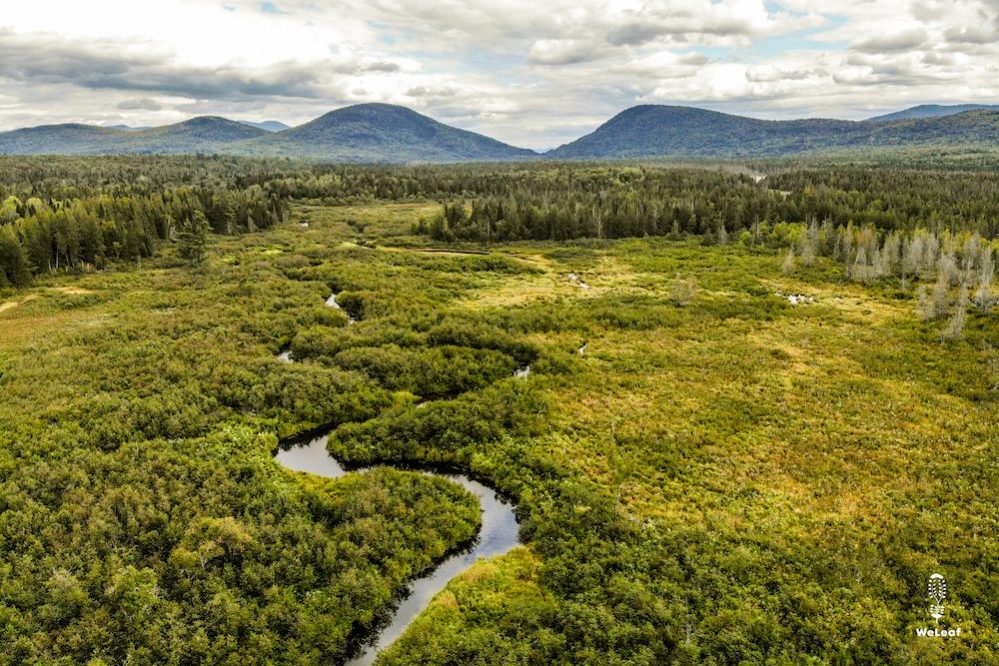
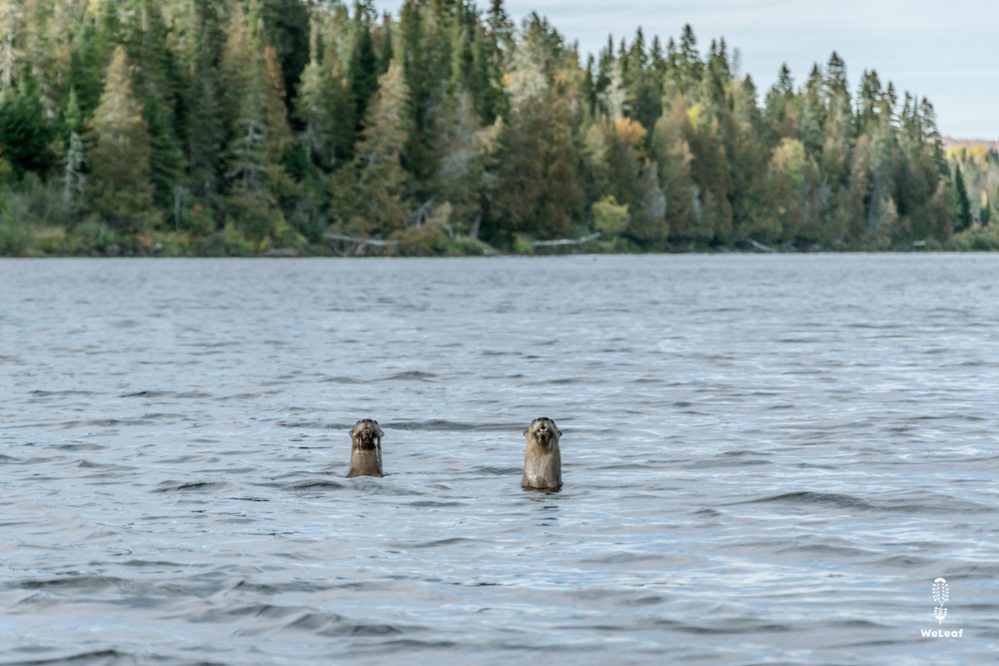
Sleeping
With the canoe you can get to places that are only accessible from the water. The NFCT has very beautiful campsites, which are well maintained and almost always equipped with a picnic table, a fire pit and a privy. Sometimes there are so many beautiful campsites on a day that it is even a shame that you cannot sleep on all of them. A number of the campsites are constructed and maintained by the NFCT itself. Other campsites are managed by other organizations. Until Maine, most campsites are free, but in Maine you always pay for a spot. For someone who does not live in Maine, this is $12 per night.
In the villages you will usually find a motel or a B&B, and there are a number of camping on the route with showers and electricity. We stayed two nights at the Baker’s Acres campground, one of the few places once you leave Adirondacks park. They have their own dock right on the river, warm showers, electricity and wifi. A few other recommendations on the trail:
- Stark Inn: a small, cozy B&B in the village of Stark, NH.
- Cozy cove cabins (Jackman): charming cabins on the edge of the lake
- Gardner sporting camps: hospitality in Maine in a cozy cabin, two days before Fort Kent
- Pelletiers Campground: a famous last night in the tent before reaching Fort Kent.
Gear list
Discover our complete gear list for a canoe trip.
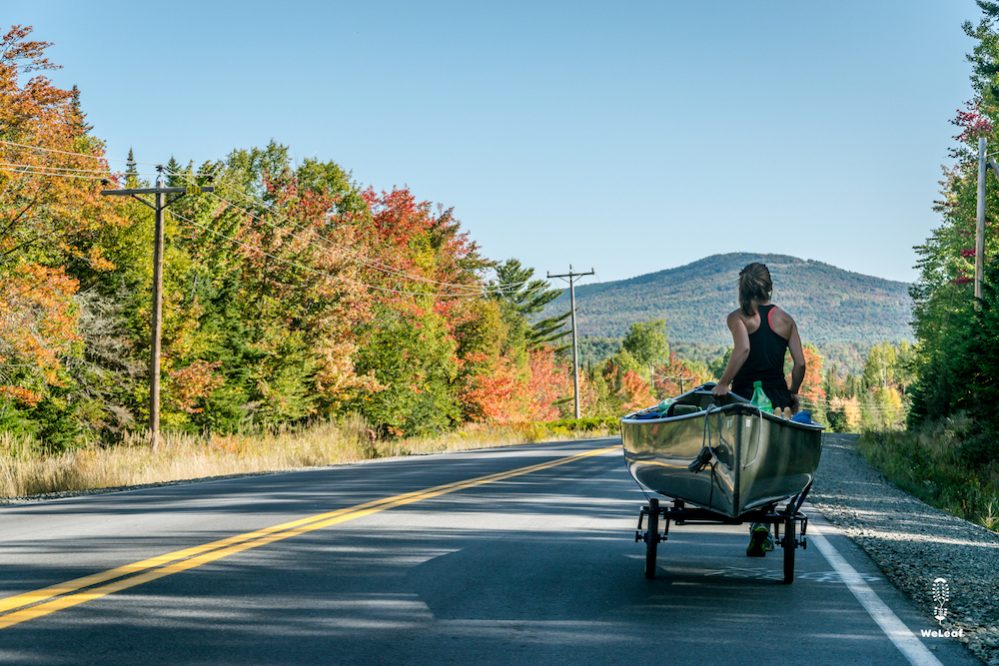
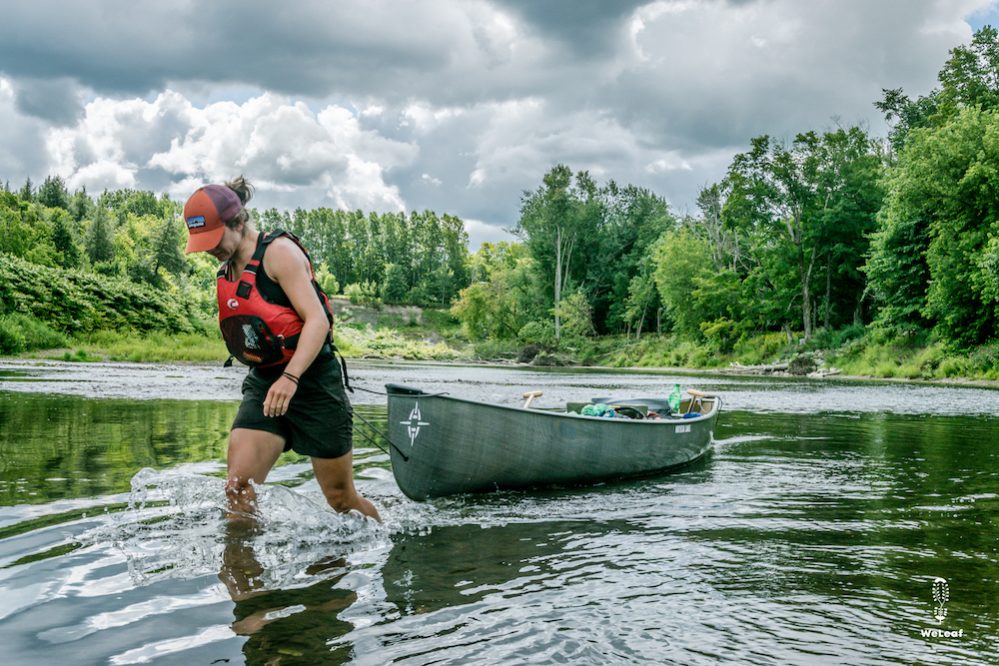
Good to know
Don't go too fast. We don't often say that we would do something twice, but we might do this canoe trip again. It took us 52 days to cover the trail and we did our best not to rush. There is so much to see, the campsites are beautiful and the canoe doesn't invite to race. Enjoy it as much as you can, because you will go back to reality after the trail.
The approach trail: the official start of the NFCT is at First Lake in Old Forge. However, we started 1 mile before the official start at the put in of Mountainman Outdoor Supply Company. You can’t imagine a better place to start. Mountainman Outdoor is also the ideal place to gather all your canoe gear. You can buy (or rent) your canoe, find all the gear and arrange shuttles if you only do a section of the trail.
Help the NFCT gather information: there are not many people paddling the trail every year and the NFCT does not have such a large group of volunteers as the Appalachian Trail. Write down useful information on the way, such as sign-in boxes that are damaged and missing signage. It will help the NFCT a lot.
Films and stories
We have written several stories about our time in the canoe, and we have devoted two episodes from our series 'on human power through North America' to the canoe trip. Enjoy!
No you've got, Yes you can get // One hundred kilos on our back // Help! Rapids // Leap of faith // Passport issues // The canoe parcours // The Industrial Wilderness // Moose moose moose
